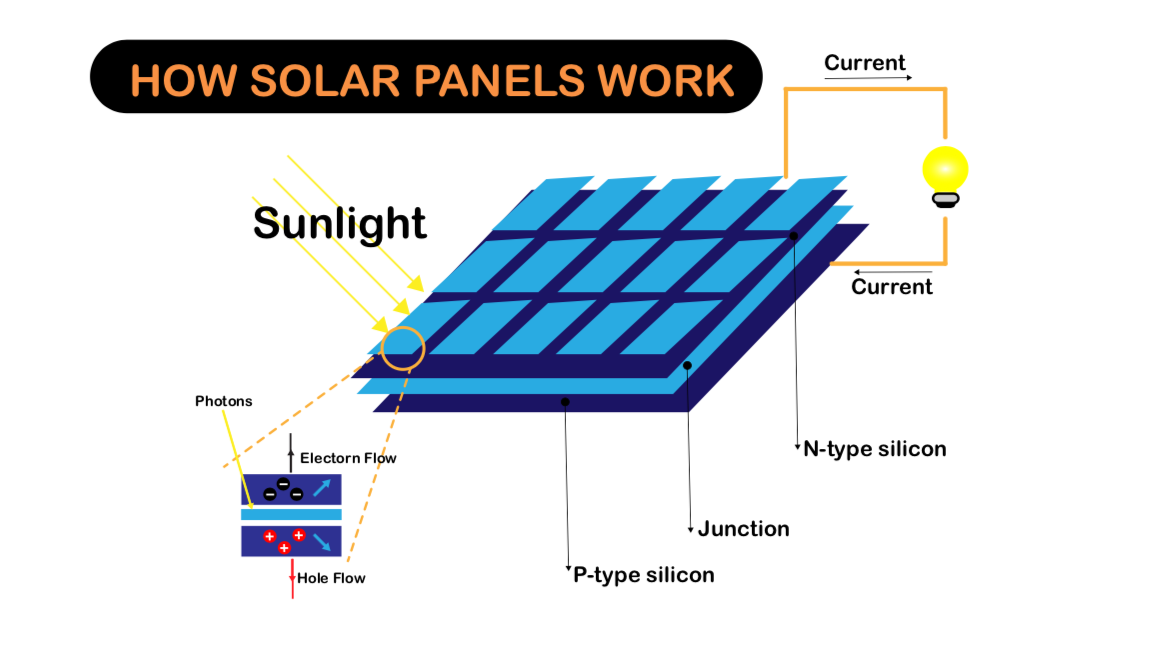How Solar Panels Work?
When the ray from the sun hit the solar cell with its photons, they knock the outside electrons from their atoms. By attaching the positive and negative poles of a cell, an electrical circuit is formed. When electrons flow within the circuit, then the electricity is generated. Multiple cells make up a solar panel, and multiple panels which are called modules can be wired together and form a solar array. The more panels, the more electricity that can be generated.
Solar Panels Made of?
They are made up of numerous solar cells. Most of Solar cells are made of silicon and semiconductor materials. Positive layer and a negative layer are constructed in order to construct an electric field, and combine it with the solar energy to generate electricity.

How Solar Panels Generate Electricity?
PV solar panels normally generate direct current electricity (DC). DC current is when electrons move in one direction in the circuit. As for the Alternating current electricity (AC), electrons are periodically pushed back and forward in reversing direction. Generators create AC electricity when the wire is coiled next to a magnet.
The government practically uses AC circuit for several issues i.e. Save the cost during delivers the electricity to residential areas. However, DC electricity from solar panels need to be in AC electricity. Therefore, Inverter is a key in order to convert the DC electricity from the solar panels to AC electricity.